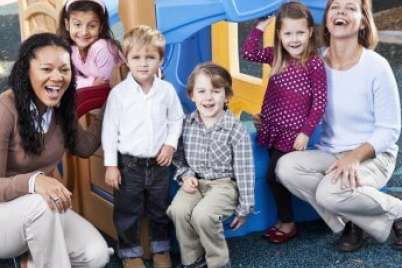
5 ways dance can inspire and support kids in all areas of life
No matter their background or level of experience, kids can gain so much from dance. Dancing helps kids develop new skills, get physically active, and explore a creative art form. But you may be surprised to learn about the unique ways that dance helps kids succeed in other facets of their lives.
Here are some examples—including perspectives from dancers, teachers, and parents—of just how dance is making a difference in young people.
1. Dance develops fundamental aspects of physical literacy
“I love moving around and not just standing. When I’m moving, I can’t stop.”
– Dancer
The International Physical Literacy Association defines physical literacy as “the motivation, confidence, physical competence, knowledge, and understanding to value and take responsibility for engagement in physical activities for life.”
Guest post by Canada’s National Ballet School
At Canada’s National Ballet School, understanding the benefits of dance for kids has been the focus for six decades. Today, NBS offers programs for students preparing for professional ballet careers, young people with a serious interest in recreational dance, and kids across Canada exploring dance as part of their school work or extracurricular activities.
Dance is a unique form of physical activity. It involves physical movement skills (such as coordination and cardiovascular endurance); cognitive engagement (including remembering patterns and visualization); and aspects of creativity (like improvisation and self-expression).
By engaging holistically—physically, mentally and emotionally—through dance, kids can develop the skills and desire to be physically active for life.
2. Dance builds self-confidence and independence
“It’s gotten easier for me to express my feelings with dance.”
– Dancer
“Dance has benefited my daughter in many ways. It has boosted her confidence, it’s been easier to make friends, she appreciates art in different forms, and she’s motivated and inspired.”
– Parent
Learning and performing choreography is an important and rewarding part of dance. But the art form also offers many other ways to empower kids to believe in themselves and value their ideas. For example, NBS’ Community Dance programs for kids guide dancers to tap into their ideas and instincts to create new movements and explore their own interpretations of concepts and music.
In this way, dance gives kids the chance to experience a creative process; they’re able to learn through play and imagination in a supportive environment, where there is no right or wrong way to move. Through this process, kids can develop greater confidence and movement self-efficacy.
3. Dance fosters artistic expression and creativity
“They really enjoy improvising on their own. I have seen a change in their expressiveness and creativity. With a grade 6 group, they had to create their own sequence, doing things in reverse. Using all the building blocks, they created a 32-count choreography.”
– Public school teacher
This teacher—who uses NBS’ resources designed for educators to integrate curriculum-linked dance activities in the classroom—observes that their students become more confident in expressing themselves and exploring artistic creativity through dance. For some kids, dancing opens doors to new passions and career paths. For others, it’s an opportunity to integrate a fulfilling artistic activity into their lives.
4. Dance encourages collaboration, community, and social skills
“More friendships are forming, all bonding together rather than in little groups . . . They’re not afraid to partner with other people anymore and have fun being paired with different people, not just their friends. It expands their social circle.”
– Public school teacher
This teacher’s comment is echoed by dancers of all ages and abilities. Whether making eye contact through an exercise, collaborating to create a movement sequence, or collectively experiencing the joy and satisfaction of performance, dancers learn how to build meaningful connections with friends, family, colleagues, and many others.
5. Dance is an effective learning tool to connect various subject areas
“They see a purpose in this. If they are doing volleyball skills at school, the way they move into a serve is a certain movement just like showing clouds in water cycle. They have an appreciation of what they can do now, whether it’s creative movement or a structured movement.”
– Public school principal
When educators incorporate dance into their lesson plans, they create new opportunities for students to make connections and deepen their understanding of the subject matter. Imagine a dance that lets you feel the rhythm of poetry, visualize the form of igneous or sedimentary rock, or experience the quadrants of the Medicine Wheel. These are just a few of the subject areas that can be made clearer and more tangible to kids through dance.
Bonus: Dance is for everyone
“The thing that struck me the most…is how dance—the thing I love and informed how I move in this world—came around in the most unexpected way, full circle to make my son’s life and mine a little richer.”
– Parent
This parent expressed it perfectly: when kids dance, they discover skills, qualities, and experiences that enrich their own lives and the lives of those around them.
If you’re interested in discovering the connections you and the kids in your life can build through dance, NBS offers freely available online resources, lesson plans, activities, and more to get you started. Visit nbs-enb.ca/community-dance/nbs-kids to learn more.
Photo courtesy of Canada’s National Ballet School; photo by Lisa Fleischmann.
Read more about the benefits of dance for kids:
Dance and physical literacy: The link between rhythm and movement
Boys and ballet: dance develops strength, balance, discipline
10 creative ways to develop physical literacy that don’t involve playing sports





